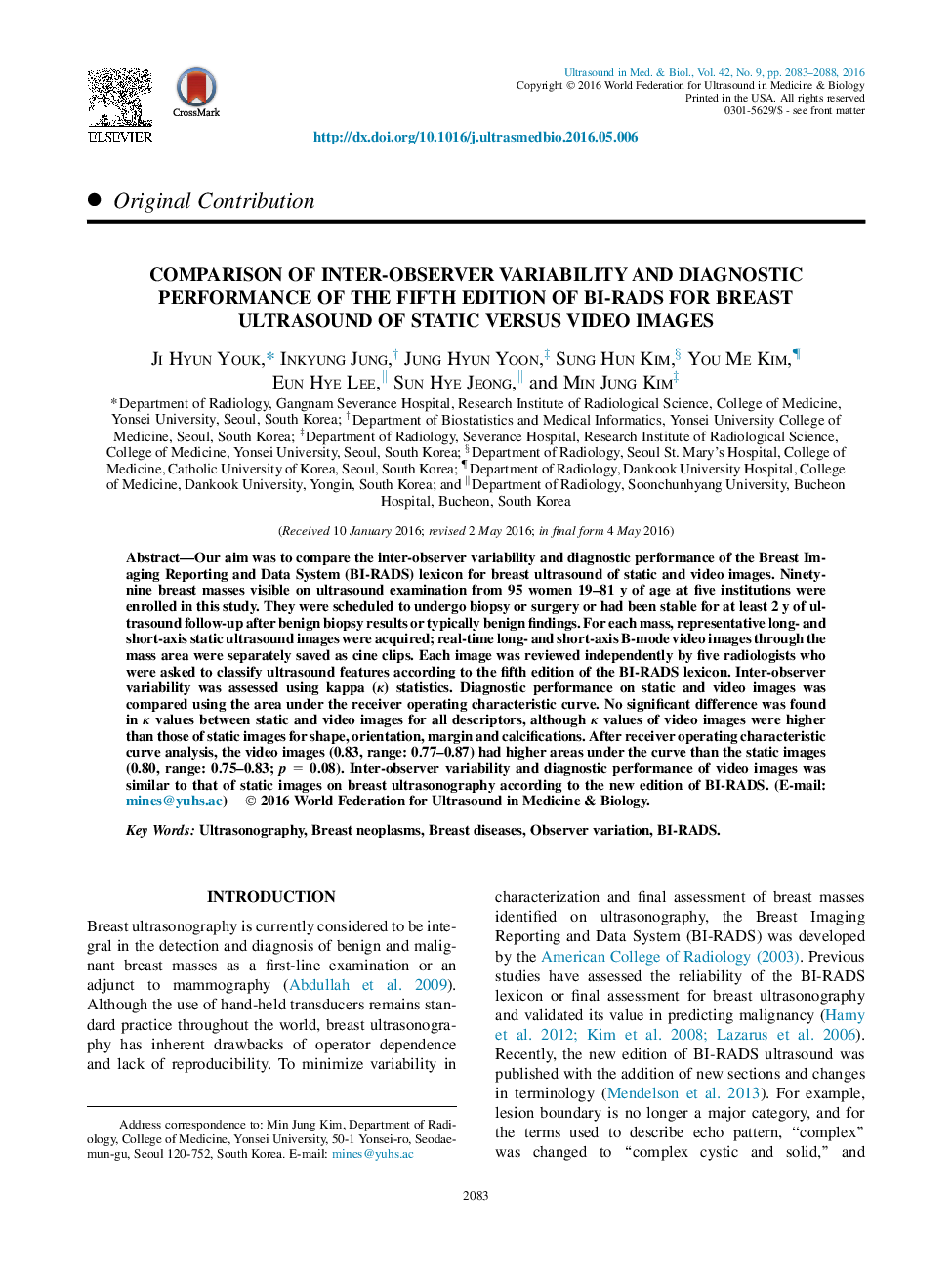| Article ID | Journal | Published Year | Pages | File Type |
|---|---|---|---|---|
| 10691041 | Ultrasound in Medicine & Biology | 2016 | 6 Pages |
Abstract
Our aim was to compare the inter-observer variability and diagnostic performance of the Breast Imaging Reporting and Data System (BI-RADS) lexicon for breast ultrasound of static and video images. Ninety-nine breast masses visible on ultrasound examination from 95 women 19-81 y of age at five institutions were enrolled in this study. They were scheduled to undergo biopsy or surgery or had been stable for at least 2 y of ultrasound follow-up after benign biopsy results or typically benign findings. For each mass, representative long- and short-axis static ultrasound images were acquired; real-time long- and short-axis B-mode video images through the mass area were separately saved as cine clips. Each image was reviewed independently by five radiologists who were asked to classify ultrasound features according to the fifth edition of the BI-RADS lexicon. Inter-observer variability was assessed using kappa (κ) statistics. Diagnostic performance on static and video images was compared using the area under the receiver operating characteristic curve. No significant difference was found in κ values between static and video images for all descriptors, although κ values of video images were higher than those of static images for shape, orientation, margin and calcifications. After receiver operating characteristic curve analysis, the video images (0.83, range: 0.77-0.87) had higher areas under the curve than the static images (0.80, range: 0.75-0.83; p = 0.08). Inter-observer variability and diagnostic performance of video images was similar to that of static images on breast ultrasonography according to the new edition of BI-RADS.
Related Topics
Physical Sciences and Engineering
Physics and Astronomy
Acoustics and Ultrasonics
Authors
Ji Hyun Youk, Inkyung Jung, Jung Hyun Yoon, Sung Hun Kim, You Me Kim, Eun Hye Lee, Sun Hye Jeong, Min Jung Kim,
